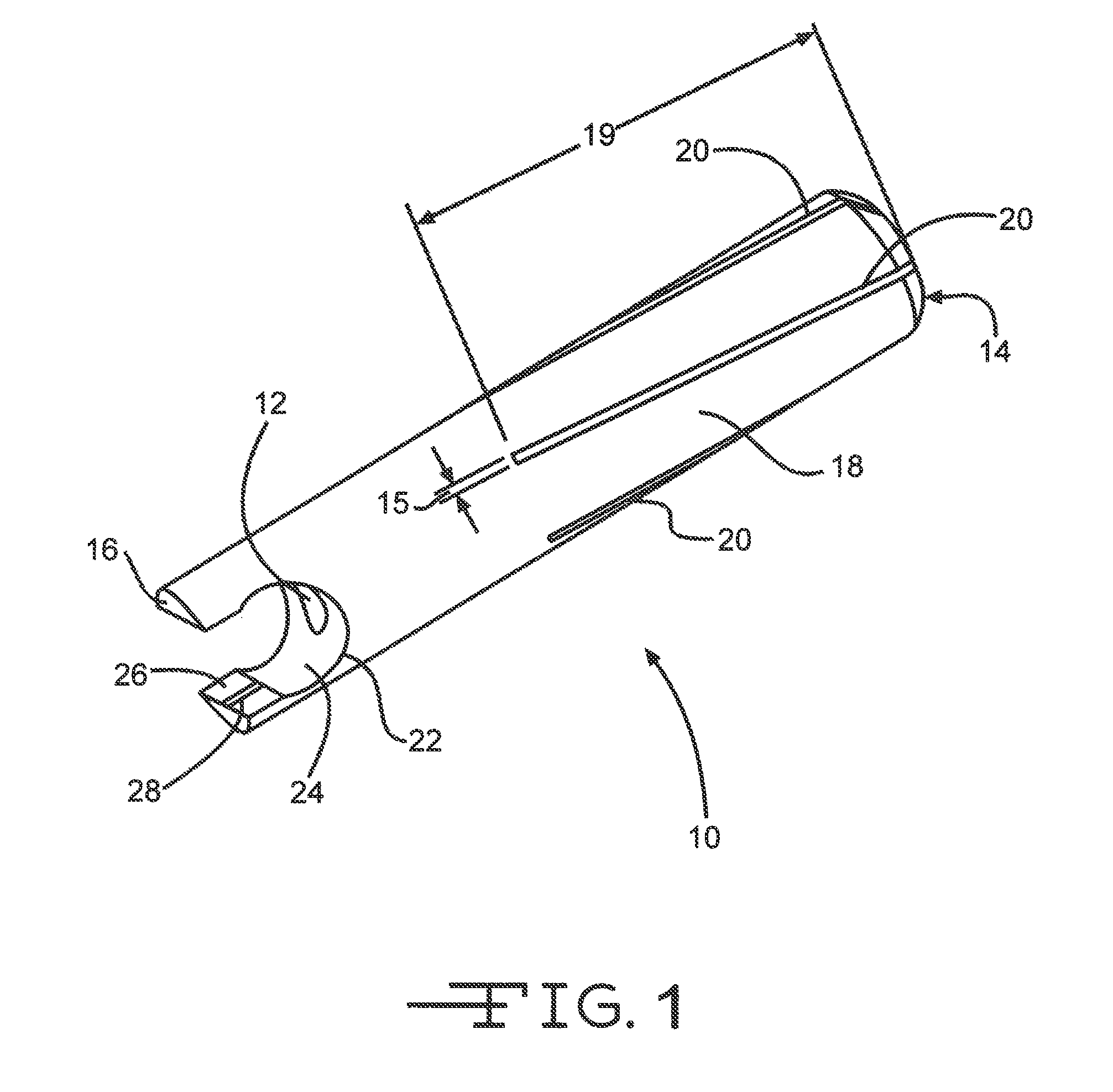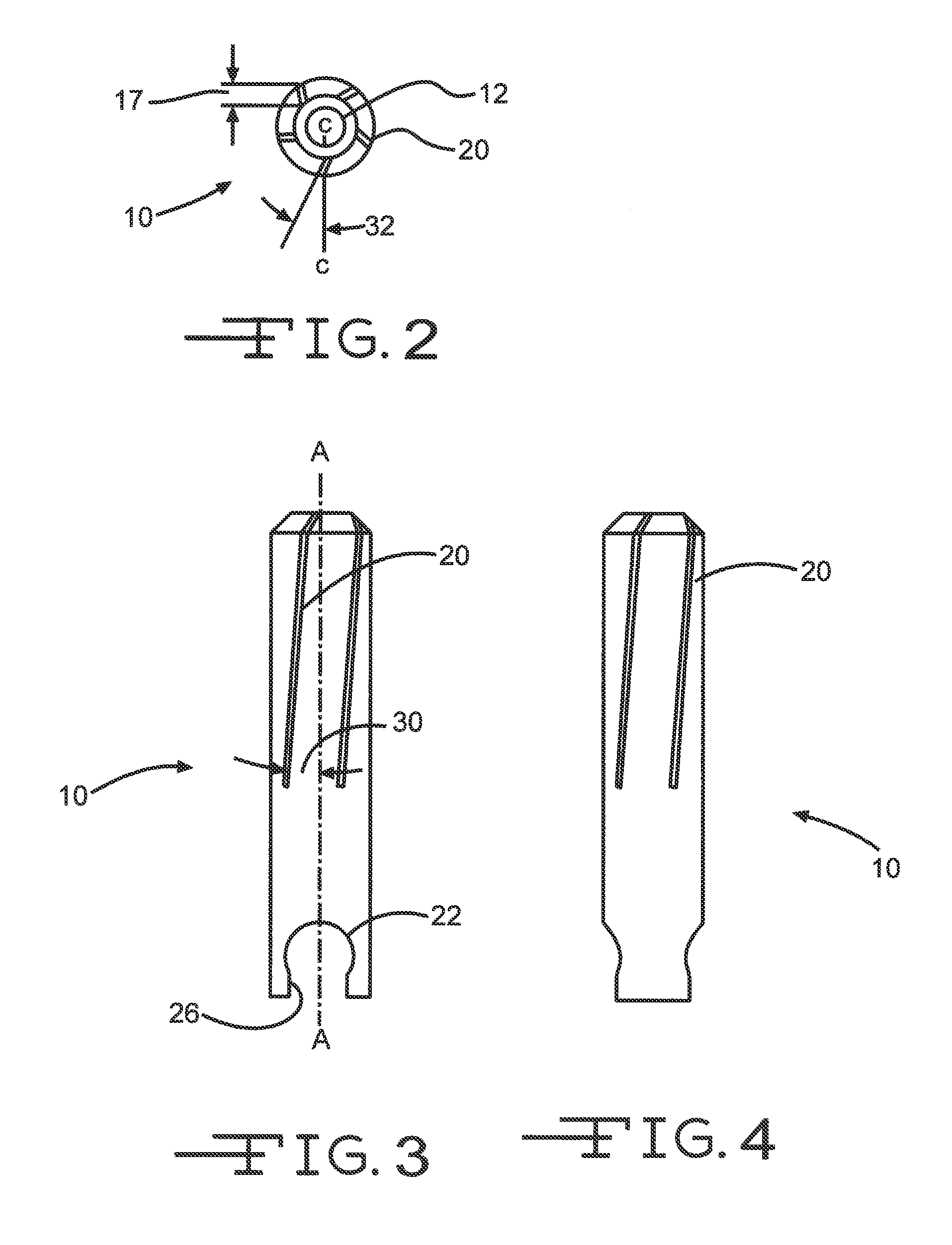Disposable flex reamer
a flexible reamer and reamer technology, applied in the field of orthopedic reamer, can solve the problems of unsatisfactory patient outcomes, inconvenient manufacturing process, time-consuming and uncost-effective manufacturing process, dull cutting blades, etc., to avoid expensive grinding operations, improve blade stability and efficiency, and reduce manufacturing costs
- Summary
- Abstract
- Description
- Claims
- Application Information
AI Technical Summary
Benefits of technology
Problems solved by technology
Method used
Image
Examples
Embodiment Construction
[0034]Now turning to the figures, illustrated in FIGS. 1-4 is a cylindrical body 10. This cylindrical body 10 forms the central foundation to which each reamer blade 34 of the present invention is attached. The cylindrical body 10 has a length, a thickness and an outer diameter. The cylindrical body 10 can be made of a solid construction. However, in a preferred embodiment, the body 10 can be constructed with a central passageway 12 that extends longitudinally through the thickness and along the length of the body 10 from a proximal end portion 16 to the distal end 14. This central passageway 12 allows for the insertion of a guide wire (not shown) and allows for the passage of debris that is removed from the intramedullary space. It is contemplated that a vacuum tube could be inserted into the passageway 12 to remove debris. It is preferred that the length of the cylindrical body 10 ranges from about 1.0 mm to about 20.0 mm and that the outer diameter ranges from about 1.0 mm to abo...
PUM
| Property | Measurement | Unit |
|---|---|---|
| angle | aaaaa | aaaaa |
| blade separation distance | aaaaa | aaaaa |
| slot angle | aaaaa | aaaaa |
Abstract
Description
Claims
Application Information
 Login to View More
Login to View More - R&D
- Intellectual Property
- Life Sciences
- Materials
- Tech Scout
- Unparalleled Data Quality
- Higher Quality Content
- 60% Fewer Hallucinations
Browse by: Latest US Patents, China's latest patents, Technical Efficacy Thesaurus, Application Domain, Technology Topic, Popular Technical Reports.
© 2025 PatSnap. All rights reserved.Legal|Privacy policy|Modern Slavery Act Transparency Statement|Sitemap|About US| Contact US: help@patsnap.com



